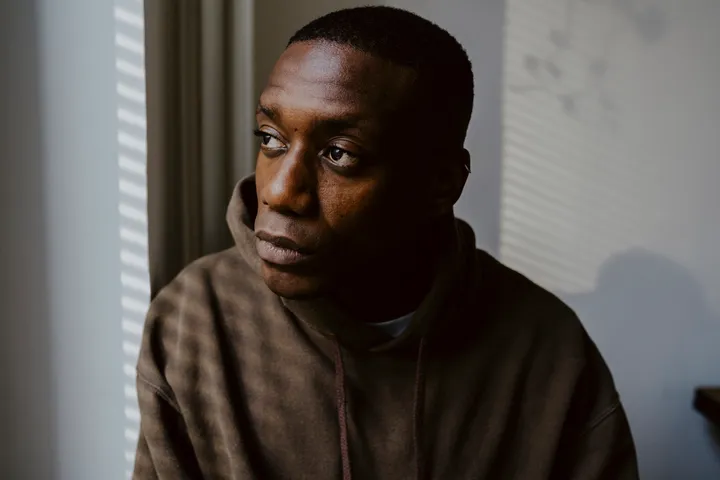When people talk about or think about suicide, the natural (and fair) reaction is to believe that someone is in immediate crisis.
However, suicidal thoughts don’t always fit a specific pattern. Instead, it’s more like a spectrum. Some people definitely need intervention as soon as possible, while others may not be interested in life but are not at serious risk of harm. Everyone on the line needs care and needs help, but the kind of help varies depending on the situation.
Suicidal ideation is a broad term that has many different meanings. It can include a series of thoughts, concerns, or wishes about death or suicide. This definition is a bit vague and broad in order to fit as many thoughts into this space as possible.
The most widely known suicidal ideation is divided into passive suicide and active suicide. When talking about suicide, what we most often think of is active ideation, and suicide is closer to the crisis.
Passive thinking, on the other hand, more fully captures the kinds of thoughts that many people often get stuck in. And it’s probably more common than you think. Here’s what to know about these passive suicidal thoughts and how to address them:
The signs of passive suicidal ideation are more vague compared to the active type.
Active suicidal ideation can be very specific: Often people who are actively contemplating suicide have a plan or method in mind. This can happen slowly or quickly.
Passive ideation has a wider scope. For some, this may mean thoughts of self-harm. For others, it may be an underlying feeling of no longer wanting to live, but also no desire to act on it. Passive ideation is more about the feeling of not wanting to live, rather than having a blueprint.
Often people don’t think about addressing the more passive ideas, but all of them are important.
Some people are at higher risk for suicidal ideation.
According to the Centers for Disease Control and Prevention, an estimated 12.2 million U.S. adults will seriously consider suicide in 2020. In the same year, approximately 3.2 million people planned suicide and 1.2 million attempted suicide. These numbers are likely low because much of the data must be self-reported.
Certain groups are at higher risk than others. Suicide is the second leading cause of death among young people aged 10 to 24, and LGBTQ young people are “four times more likely to attempt suicide than their peers.”
Additionally, people who are American Indian, Alaska Native or Black and other people of color, as well as veterans, are also at higher risk. This is because these groups face suicide risk factors, including chronic discrimination or harassment.
It’s also a stress response for people who have limited coping mechanisms and a higher risk of harm.
Everyone experiences stress related to difficult circumstances in life, whether it’s losing a job or dealing with a health diagnosis.
But when it comes to such stress developing into suicidal ideation, it’s important to understand a person’s baseline vulnerability when experiencing a stressor. Someone’s baseline vulnerability is how at risk they are of being harmed, whether emotionally or physically.
If your baseline of vulnerability is low and you have coping mechanisms, such as friends to talk to and a therapist to lean on, you may not go into crisis mode when you experience a stressor. But if your baseline vulnerability is high and you’re facing issues like discrimination or family rejection in addition to newly discovered stressful life events, you’re more likely to reach a crisis point and potentially develop suicidal ideation.
Therefore, in people with limited coping abilities, suicidal ideation may be a response to stressful situations or triggers.
No one has to deal with any type of suicidal ideation alone.
No matter what type of suicidal thoughts you experience or how often you experience them, it’s important to seek support.
First, get help immediately. Help can mean different things to different people. You can contact a friend or family member, a mental health professional, contact a friend online or call a helpline such as The Trevor Project’s Lifeline or 988.
When talking to a mental health professional, you can let them know that you are experiencing suicidal ideation, whether it’s active suicidal thoughts or you just don’t want to be alive anymore. Psychology Today has an extensive database of therapists that you can search for therapists who also specialize in suicidal ideation.
No matter the situation, just seek support immediately.
It is important for loved ones of those in need to be aware of these warning signs. People with suicidal ideation sometimes say they feel empty or hopeless, guilty or ashamed, trapped, with no options, in severe mental or physical pain, and like they are a burden to their loved ones.
On the surface, this may look like alienating a loved one; Increased drinking or drug use, saying goodbye; taking dangerous risks such as driving too fast, or a sudden significant improvement in behavior (which may indicate that the person is relieved after making a plan).
No matter what someone is going through, suicidal thoughts are dangerous and should be addressed by professionals. There is no such thing as “less serious” behavior when it comes to suicide or suicidal ideation. No one should have to endure suicidal thoughts of any kind—and they can get better with treatment.



